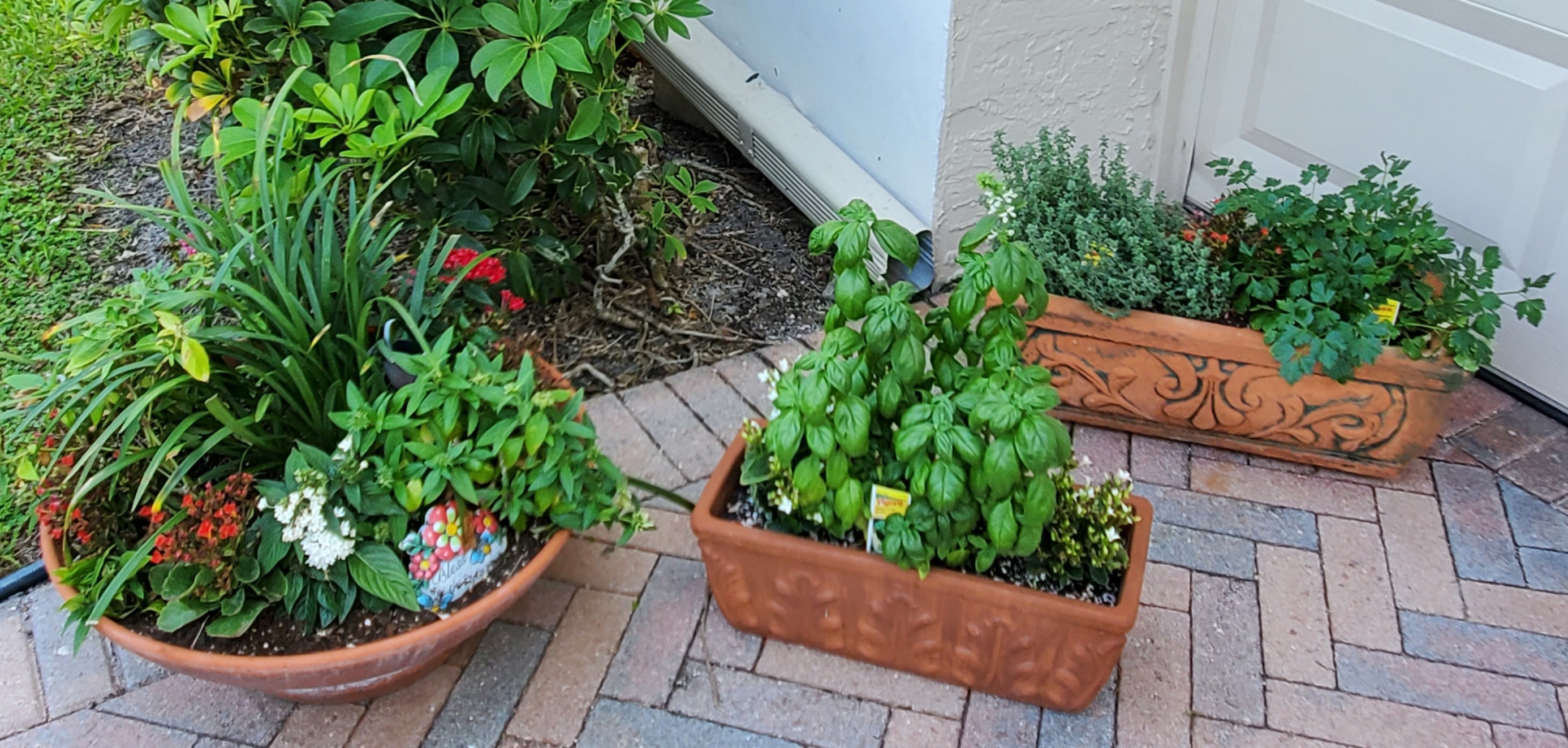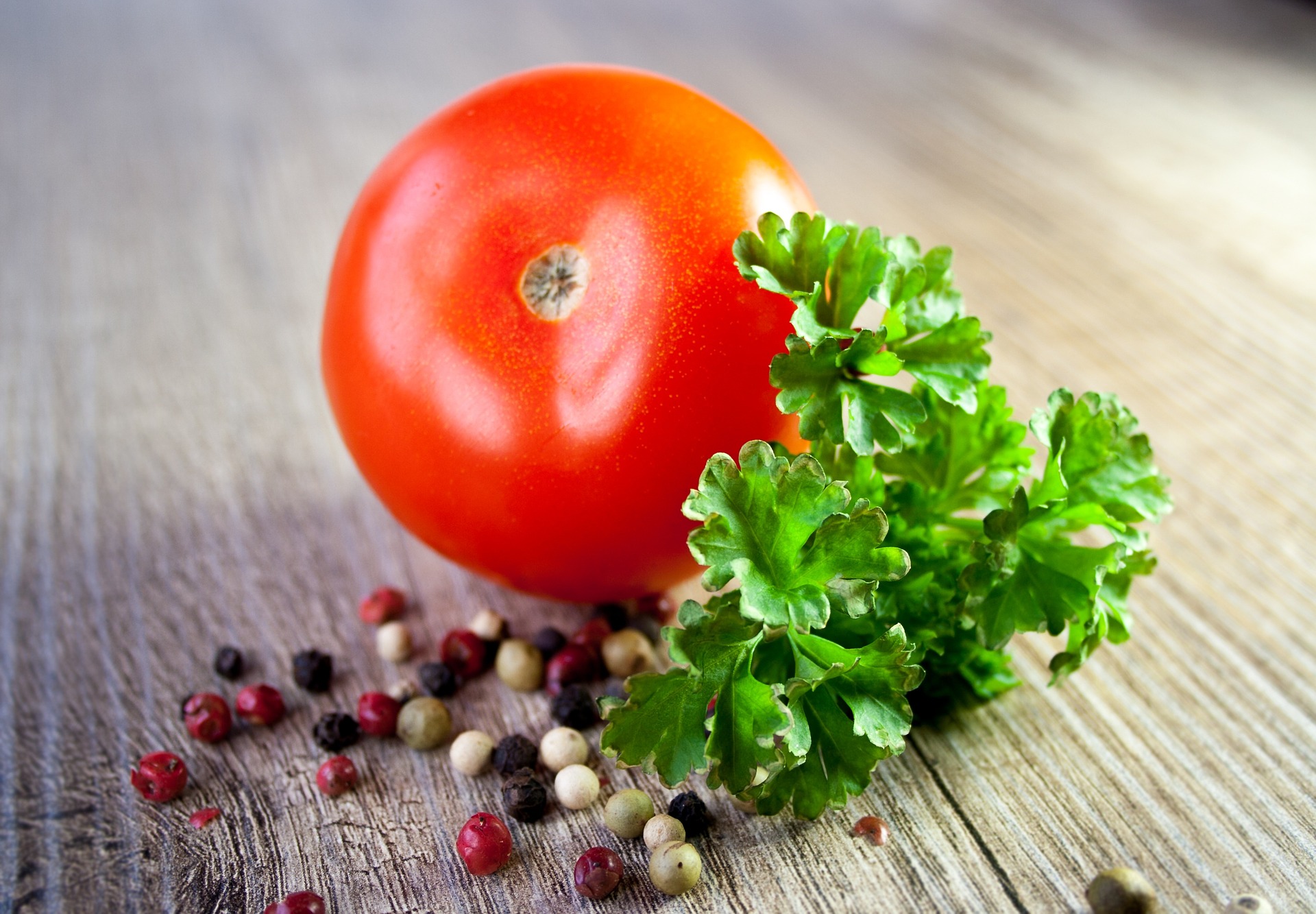 by Sharon Quercioli
by Sharon Quercioli
I love Parsley! I’ve even included a picture of my herbs that includes Parsley. Even though I use parsley all the time in my kitchen, I realized recently that I did not know much about this herb other than its powerful flavor and its versatile use in the kitchen. So, I decided to do a bit of research and find out all the health benefits. This is what I found…
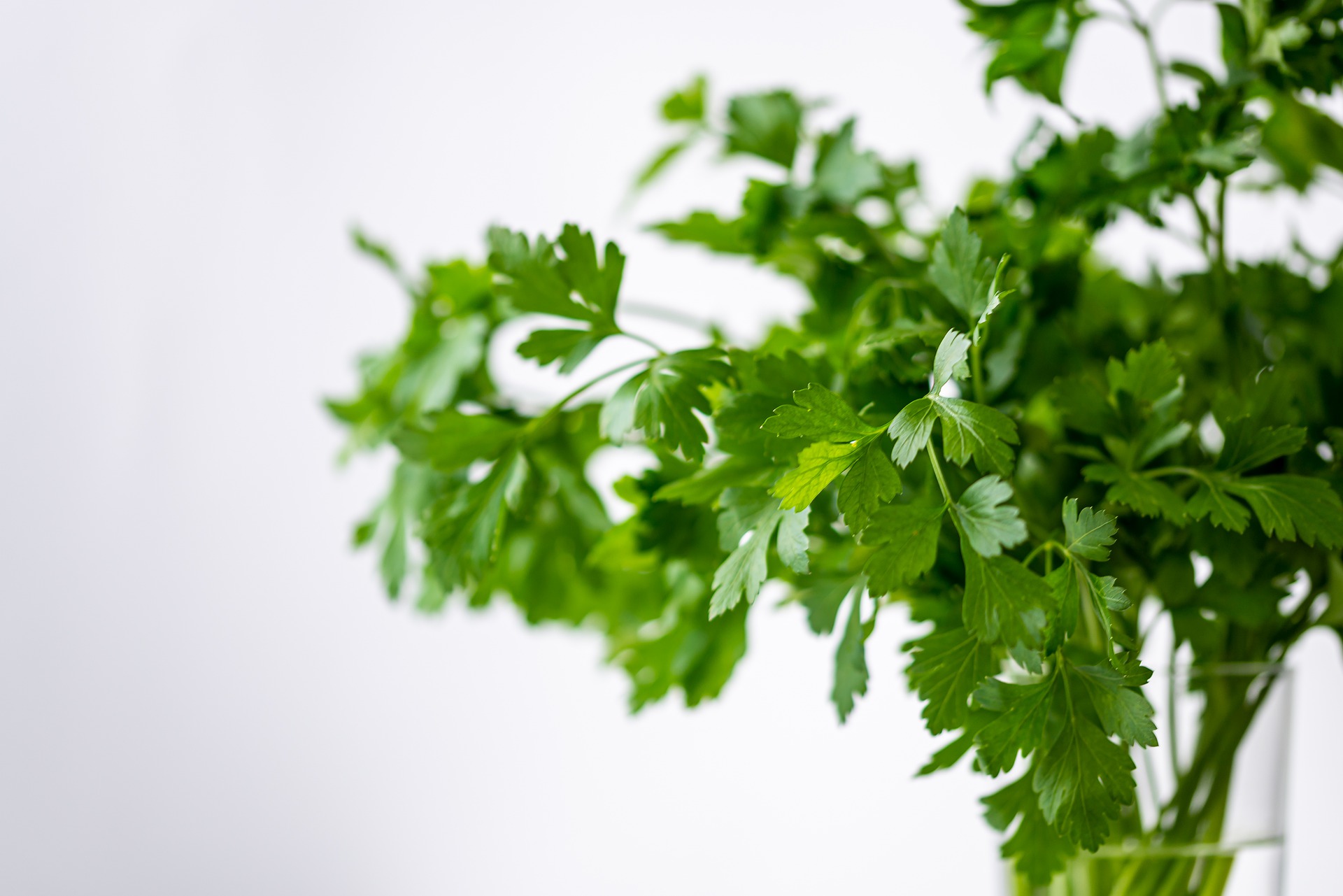
A Little History on Parsley
Parsley is native to the eastern and central regions of the Mediterranean. This means places like southern Italy, Greece, Spain, Malta, Portugal, Lebanon and Cyprus. There are three different types of parsley:
Root Parsley, which is common in central, southern and eastern European dishes. It is also often used as a snack or like a vegetable in a number of casseroles and stews.
Flat Leaf Parsley, which some say has a stronger flavor.
Curly Leaf Parsley (also known as French parsley), which is used as a garnish.
The leaf parsley varieties are the kinds that we see in the grocery stores here. Root parsley looks a bit like a parsnip (though it tastes different) and is very much a root vegetable, not an herb.
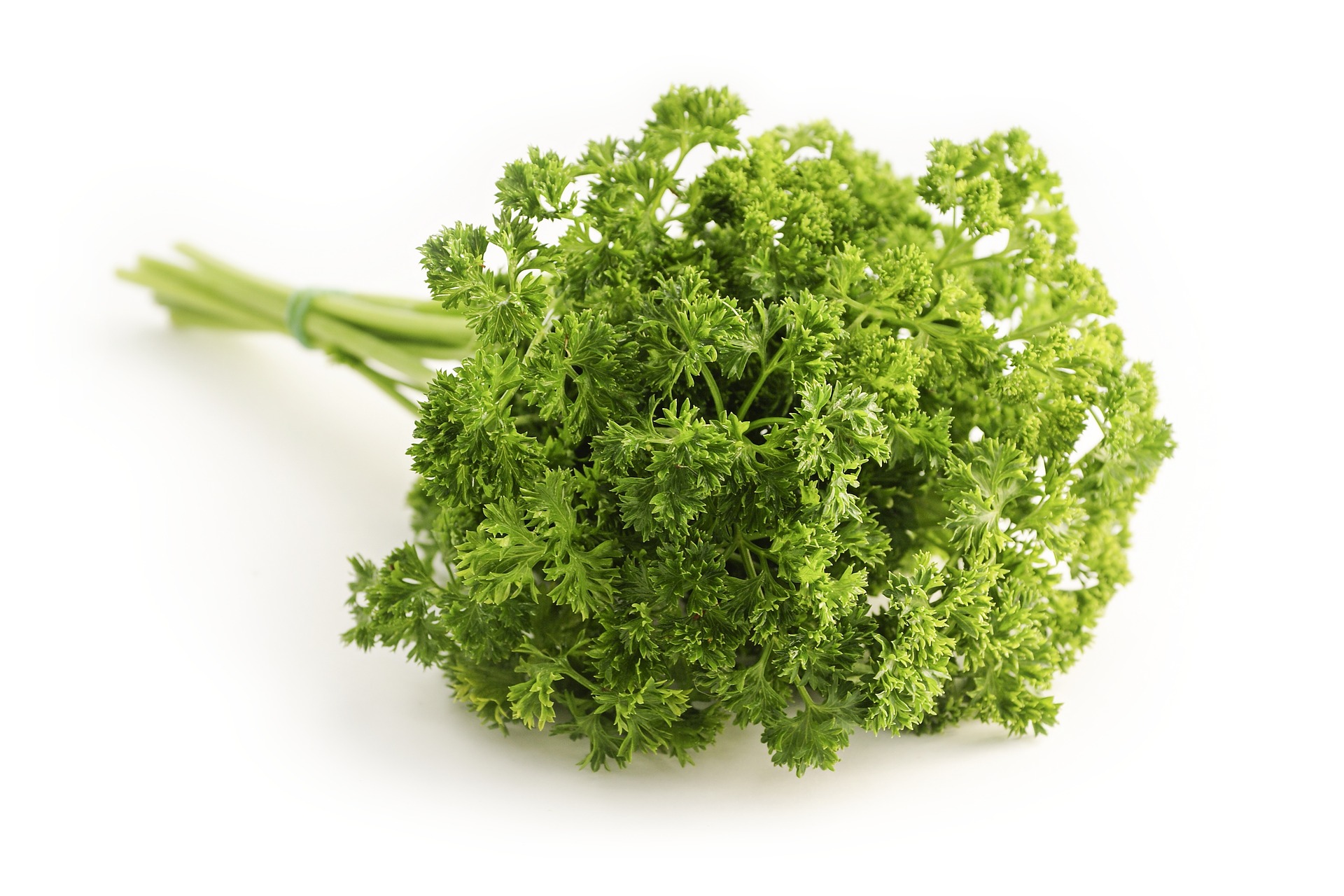
Is Parsley Good for You?
Yes! It’s filled with nutrients and antioxidants, great for your eyes, contains antibacterial properties and is good for your heart. Let’s unpack each of these, shall we?
Antioxidants
We will go into some of the great nutrients packed into these tiny leafy greens in some of the other sections. Let’s focus on the antioxidants for now.
Eye Health
Parsley has three carotenoids that are great at helping protect your eyes and keeping them healthy: beta carotene, zeaxanthin and lutein. The last two help by preventing age-related degeneration (specifically age-related macular degeneration or AMD), while beta carotene is wonderful at general eye health support.
Antibacterial
If you use parsley extract, you’ll be able to benefit from its antibacterial properties. Studies have shown that parsley extract can prevent the growth of bacteria in food and can fight against things like molds, yeast and other infections.
Heart Health
Since parsley is a good source of the B vitamin folate, it is great at helping you keep your heart in tip-top shape. Folate is great for your heart. Some studies have even shown that if you have a low intake of folate, it could increase your risk of heart disease. That makes parsley doubly great since you can easily drop it into many different types of dishes.
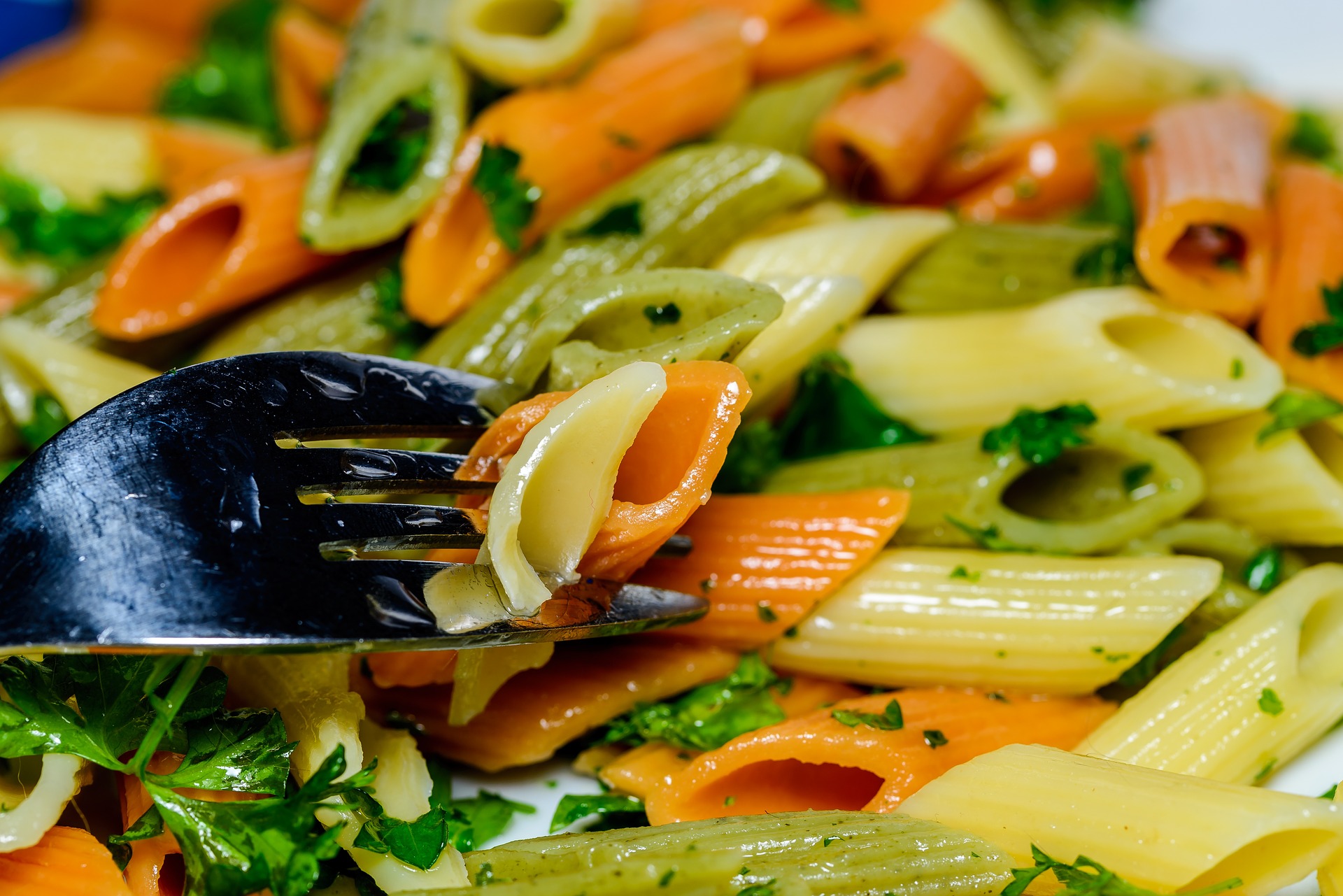
Adding Parsley to Various Meals
One of the things I love about parsley is its versatility. I love being able to mix up various spice combinations to add to pasta sauce, soups and stews, as well as to use as toppings for various open-faced whole wheat sandwiches and baked vegetables.
When it comes to topping cold foods or adding to sauce, you should be using parsley sooner rather than later. I love using fresh herbs and spices over dried herbs and spices. Not only is there more flavor, but you also do not get the dried, crunchy feeling every few bites. Parsley is a great example. I always opt for fresh parsley over dried parsley when it comes to adding it to or mixing it into:
Oil or Cream-Based Salad Dressings
Spreads for sandwiches
Garnish for any warm food like baked potatoes, sweet potatoes or broiled eggplant
Toppings for bruschetta
Pasta, pizza sauces or pesto
Dips for vegetables or crackers
Herb butter
My Favorite Parsley Recipe
I’m going to stick with the “versatility of parsley” theme and give you one of my all-time favorite parsley recipes: Chimichurri! Chimichurri is a sauce that can be used for dipping or as a marinade. It is oil based and similar in flavor to a salsa verde. It is tart, green, and can be a great marinade for any sort of meat or fish. I love to keep a small serving in the fridge to serve with grilled vegetables and chicken.
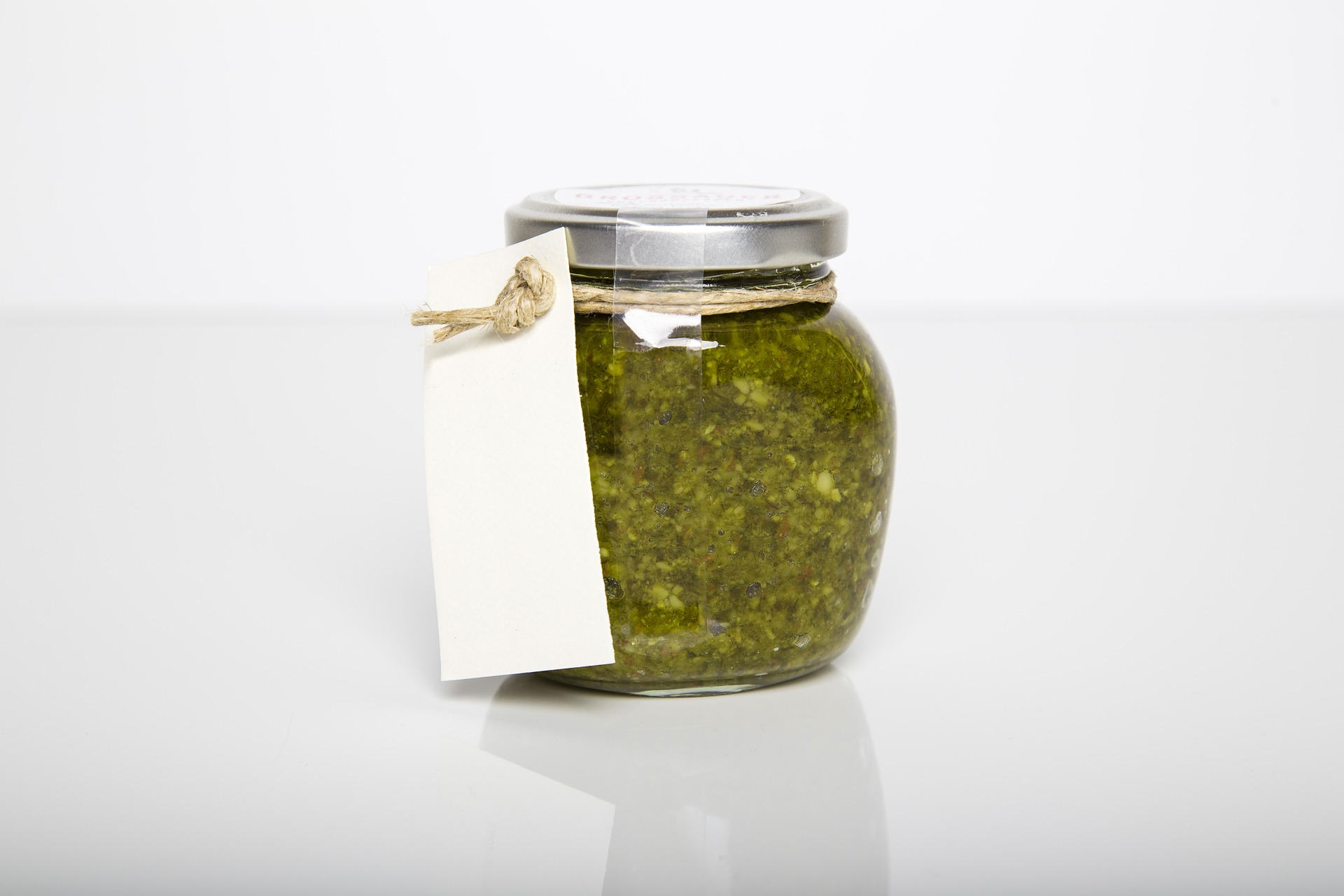
Chimichurri
Things You’re Going to Need:
Cup of fresh Italian parsley leaves (not dried, that would be a lot of parsley)
Half a cup of fresh mint leaves
Two scallions, chopped (white and green parts)
Half to three-quarters of a cup of extra virgin olive oil
Quarter of a cup of drained capers
Tablespoon of freshly squeezed lemon juice
Some sea salt
Ground black pepper
Quarter of a teaspoon of red chile flakes
What You’re Going to Do with Those Things:
Put the parsley and mint in a small food processor or blender (I have a Magic Bullet) and pulse until coarsely chopped.
Add the scallions and pulse it all again.
Add the oil, capers, lemon juice and salt and pepper (to taste), and blend it a little more until it is all coarsely chopped.
Place in a serving bowl and gently mix in the chile flakes to taste.
You can cover chimichurri and refrigerate it for up to a day before serving. If you’re using it as a dipping or drizzling sauce, I suggest letting it sit for a day so the flavors mix together nicely!
